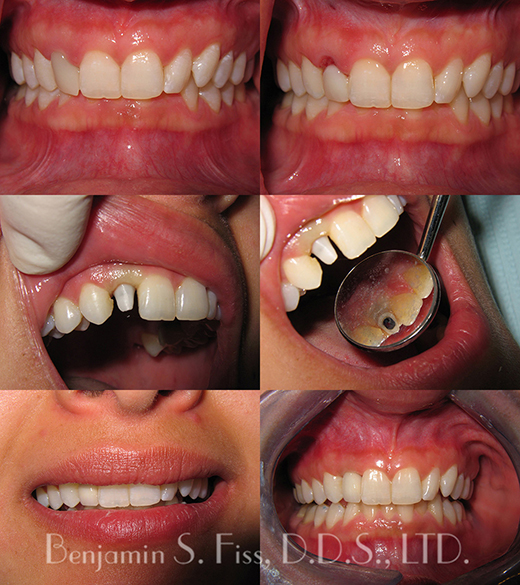The Definitive Guide to Dental Sense
10 Easy Facts About Dental Sense Explained
Table of ContentsGet This Report on Dental SenseThings about Dental SenseDental Sense Things To Know Before You Get ThisDental Sense Things To Know Before You Get This
are clinical devices surgically implanted into the jaw to recover an individual's ability to chew or their appearance. They supply assistance for synthetic (fake) teeth, such as crowns, bridges, or dentures. When a tooth is shed due to injury or disease, an individual can experience complications such as rapid bone loss, faulty speech, or adjustments to eating patterns that cause discomfort.Oral dental implant systems include an oral implant body and dental implant joint and might also consist of an abutment fixation screw. Dental implant vs bridge. The dental implant body is operatively put in the jawbone in place of the tooth's root. The oral implant joint is normally connected to the implant body by the joint addiction screw and extends via gum tissues right into the mouth to sustain the connected fabricated teeth
(https://www.pageorama.com/?p=dentalsense1)Structure of The Oral Implant System picking oral implants, speak to your dental supplier about the potential benefits and threats, and whether you are a candidate for the procedure. Points to think about: Your general wellness is an important aspect in establishing whether you are an excellent candidate for oral implants, how much time it will certainly take to recover, and the length of time the implant might remain in place.
Smoking cigarettes may influence the recovery procedure and decrease the long-lasting success of the dental implant. The healing process for the implant body may take a number of months or longer, throughout which time you usually have a temporary abutment instead of the tooth. the dental implant treatment: Thoroughly comply with the dental hygiene directions offered to you by your dental company.
Dental Sense - Truths
Implant failure can result in the requirement for another procedure to fix or replace the implant system. Recovers the capacity to chew Brings back aesthetic look Assists maintain the jawbone from shrinking due to bone loss Maintains the health and wellness of the surrounding bone and gums Assists keep adjacent (close-by) teeth stable Enhances top quality of life Damage to bordering natural teeth during implant placement Injury to the surrounding cells during surgery, such as sinus opening Injury throughout surgical treatment (for example, crack of bordering jawbone) Insufficient function, such as really feeling like the teeth do not bite with each other normally An experience that the tooth is loosened or twisting in position resulting from an abutment screw loosening Implant body failure (looseness of the dental implant body) due to systemic infection, which may be more probable in clients with unchecked diabetes mellitus as a result of local infection in bone and periodontals sustaining the implant body as a result of delayed healing, which may be much more most likely in clients who smoke Trouble cleansing the gums around the implant, causing inadequate dental hygiene Unattended gum illness Post-surgical tingling because of nerve impingement or damages Always alert health and wellness care carriers and imaging service technicians that you have oral implants before any magnetic resonance imaging (MRI) or x-ray treatments.
FDA is not familiar with any negative events reported for MRI or x-ray treatments with dental implants. Dental implants systems are typically made from products that comply with worldwide like it agreement standards of the International Company for Standardization (ISO) or ASTM International. These criteria have information of what makes a safe product.

A dental implant is a framework that replaces a missing tooth. With screw-like tools, the doctor inserts an implant right into the jawbone, and it acts as an anchor for a synthetic tooth, called a crown.
Things about Dental Sense
Some people are not eligible for dental implant surgery. It is for oral cosmetic surgeons to operate on individuals with: acute illnessuncontrollable metabolic diseasebone or soft tissue illness or infectionIf these problems are fixed, a person can have the surgical procedure. In, dental specialists avoid operating on individuals with: If people with any one of the above undertake dental implant surgical procedure, there is a higher danger of the dental implant stopping working.

Dental dental implant surgery is a tailored process. It's not the same for every person. The following offers a basic introduction of what you can expect your dental expert, oral specialist, periodontist or prosthodontist to do: Put the implant operatively. Provide you time to heal. Connect the article and final crown, bridge or denture.
Next off, your specialist will carefully put the dental implant right into your jaw. If your implant is near the front of your mouth, your dentist will certainly make a momentary tooth for you to use until you heal.
How Dental Sense can Save You Time, Stress, and Money.
During the healing phase, your jawbone ought to fuse to the oral implant. This process can take anywhere from three to 9 months.
When your dental implant heals, your dental professional can connect the abutment (little connector article) and your final restoration (crown, bridge or denture). This typically takes concerning one hour to complete and might require a second small surgical treatment. You shouldn't really feel any discomfort during your oral implant procedure since your provider will make use of medication to numb your gum tissues.